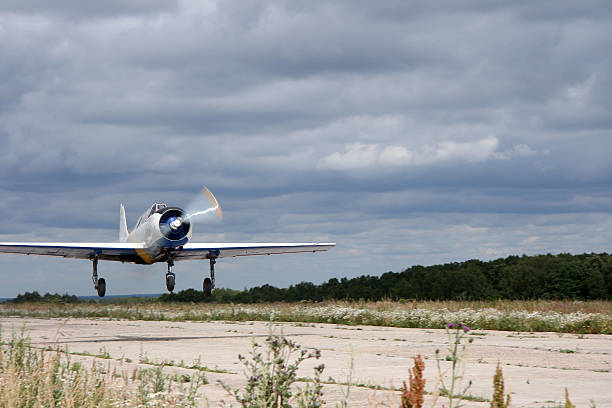It is possible to comfortably fly in an unpressurized aircraft, but your altitude is severely restricted. Staying around 12,500 feet allows for enough oxygen and air pressure for you to remain fully functioning while flying, but you’re likely to encounter different issues at that altitude. In this article, we’re going to study why and how Aircraft are pressurized in detail?
The History of Aircraft Pressurization
Planes of the past were not pressurized, so pilots and crew had to stay much closer to the ground when flying. This presented issues with turbulence, as the “thicker” air and greater pressure affected an aircraft’s ability to fly smoothly.
By World War II (1939-1945), pilots began to wear personal oxygen masks known as flight helmets in order to avoid altitude sickness. These masks, while no doubt cumbersome, delivered the oxygen necessary to prevent pilots from passing out when flying higher than 12,500 feet for more than 30 minutes.
Before cabin pressurization systems existed, the Federal Aviation Agency required pilots to have oxygen when flying above 12,500 feet, and oxygen for passengers when flying above 15,000 feet. Thankfully, engineers kept working on ways to offer oxygen and appropriate air pressure throughout an aircraft’s cabin so passengers wouldn’t have to don flight helmets or suits.
Most aircraft were pressurized by the 1950s but, to this day, some military aircraft are not pressurized and rely on flight helmets to provide oxygen to pilots and crew.
Why Are Airplane Cabins Pressurized?
Without a system in place to regulate the air inside the plane, it would not provide passengers with the right amount of oxygen to stay comfortable and healthy. At 30,000 feet, the air is “thinner,” meaning it isn’t as saturated with oxygen.
So, why do airplanes fly so high if it requires so much work to keep pilots and passengers safe? It’s because the thinner air at higher altitudes (30,000+ feet) usually translates into a smoother ride for aircraft. There are fewer disturbances in the air, so there’s less chance of turbulence during the flight. Many would say that’s a great tradeoff, and worth putting in the effort to modify aircraft for better oxygen saturation and air pressure.
What is Altitude Sickness?
Anything above 8,000 feet is considered high altitude, and many of us suffer from altitude sickness at this height above sea level. Did you know gravity is responsible for “holding” oxygen closer to the surface of the Earth? The higher we climb, the less oxygen we’ll find for our lungs, no matter how fit we are. Additionally, with less pressure in the air outside our bodies at higher altitudes, our respiratory, circulatory, and cardiovascular systems have a harder time functioning. We need higher pressure acting upon us to help the lungs draw in sufficient breaths, and for our hearts to pump blood throughout our bodies.
Signs of Altitude Sickness
- Quicker breathing
- Dizziness
- Blurred vision
- Headaches
- Fatigue
- Fainting
Altitude sickness isn’t always serious, but it can lead to other health issues, such as:
- High-Altitude Pulmonary Edema
- High-Altitude Cerebral Edema
- Decompression Sickness – also known as “the Bends”
Left untreated, any of these conditions can be fatal.
The body can usually acclimate to a new altitude in a few days, but what are you to do when you’re flying in a plane for just a few hours? Rather than make everyone sick, the aviation industry figured out a way to pressurize aircraft cabins for the wellbeing of pilots, crew, and passengers.
First Pressurized Aircraft
In 1937, the Army Air Corps flew a Lockheed XC-35 with the first pressurized cabin containing passengers and crew. This experimental flight led to the development of a pressurized cabin for the upcoming Boeing 307 (1938), and the Boeing B-29 (1942). Pressurizing the cabins for the crew and passengers would eliminate the need for oxygen masks or pressurized suits to be worn by everyone during flights.
How Aircraft are Pressurized
Did you know that air from the engines is part of the pressurization process? But don’t worry; you’re not inhaling engine exhaust when you take your window seat!
Components of Pressurized Cabins
- No sharp edges to trap air
- Jet engine compressor air – also known as “bleed air”
- Cooling air packs
- Intake and output valves
- Bleed holes in cabin windows
Piston-powered aircraft (1903 and beyond) were used to pressurize their cabins via the use of an electric air compressor. Outside air would be drawn into the cabin, but the equipment added more weight to the aircraft.
When jet engines were introduced (1930s and beyond), aircraft would draw air from the engines (bleed air) into turbo compressors, and the air was then ducted into the cabin.
Using hot air from jet engines is still the process used today, although it’s been fine-tuned to use lighter-weight equipment and run more efficiently.
Pressurizing with Jet Engine Air
As you can imagine, jet engine air is pretty hot. It goes through the processes of induction, compression, and ignition when it’s combined with jet fuel to power the engines. After the air and fuel mixture is burned, it produces exhaust. The exhaust gasses not only create thrust for the aircraft, but also the air that will eventually make the aircraft’s cabin comfortable at 30,000 feet.
Bleed air from the jet engine performs a number of tasks. In addition to thrust and pressurization, it helps with:
- Wing ice protection (warm air can keep wings from icing over)
- Engine ice protection
- Fueling air-driven hydraulic pumps
Obviously, the hot, bleed air does a great job deicing the plane, but it needs to be cooled before it can be ducted into the crew and passenger cabins. Aircraft are now equipped with an intercooler, which does the job of a radiator found in a vehicle on land.
Hot bleed air cycles through the intercooler before being sent to the underbelly of the plane. There, the air is subjected to additional cooling via what is essentially an air conditioning system. Any leftover, warm air is directed to the outside of the plane, while the cooled air is sent to be circulated throughout the cabin. The air pressure and temperature are constantly regulated by valves that stop and release flow of air entering the cabin; additional valves let the “used” air out of the cabin and the plane as a whole.
Bleed Holes in Aircraft Windows
Let’s talk a little more about the bleed holes in aircraft windows. Like a custom home, car, or office building, aircraft require specialized windows. But more than just simple sheets of tempered glass, airplane windows need holes.
Yes, you read that right! The next time you take your window seat on a flight, look to the bottom of your window. There are three panes in the window; and they all work together to promote ideal cabin pressure during takeoff, flight, and landing. The outer window pane and inner window pane are fully intact, but middle pane has a tiny opening. That tiny opening called a bleed hole and that hole helps the windows absorb changes in air pressure without breaking. The bleed hole also prevents moisture buildup. So, you almost always have a clear view of the world outside your window.
Is Pressurized Air Dangerous?
Contrary to popular belief, the air in the cabin is not constantly recycled. The air system will not continually recirculate germ-filled air for the duration of the flight. Stale air from the plane is constantly being released into the atmosphere, while fresh, bleed air is being treated and ducted into the cabin at the appropriate level.
The most common downside to cabin air is probably its low humidity. Without a lot of moisture in the air your hair and skin may easily dry out. You may be a little more thirsty than usual if you’re used to more humidity. Of course, this can be easily remedied by drinking lots of water before, during, and after your flight. Even if you live in a dry climate, it’s likely that the humidity level at 30,000 feet (which is less than 12%) is significantly less than what you’re used to.
Another reported that a negative effect of pressurized air may be a decreased sense of taste or smell. Optimal flying altitude usually only negatively impacts sweet and salty taste buds and olfactory receptors, allowing us to still enjoy sour, bitter, and spicy flavors in flight.
The tradeoffs of flying high are definitely worth any side effects of pressurized passenger cabins. Most of us would take a smooth flight over a low-flying, bumpy one any day. Pressurization is all part of the safety regulations put in place to make airplane travel convenient, comfortable, and cost-effective.




